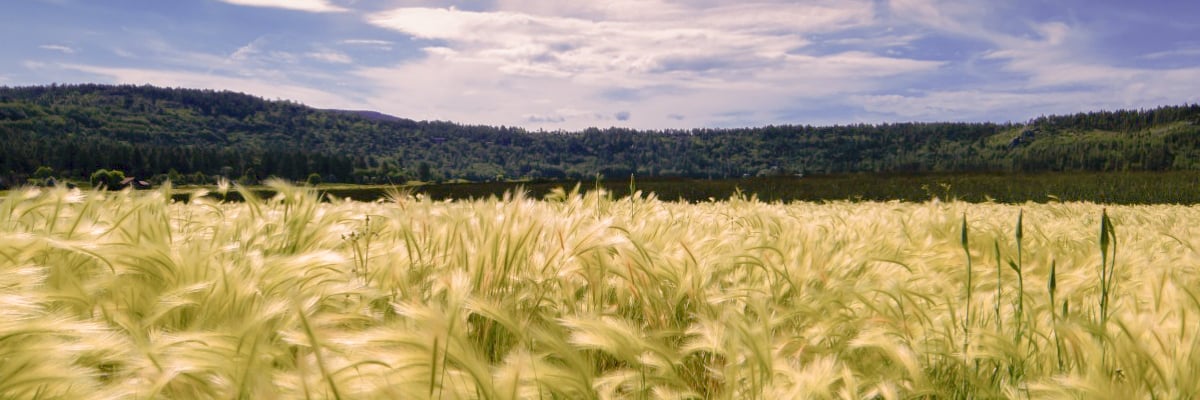
By
Roxane Neal
Farmers and those involved in agribusiness have historically been early adopters of technology to help increase yield, reduce time, and save costs. Going all the way back to 1793 and Eli Whitney’s invention of the cotton gin we see farmers using design thinking for new solutions to wide and common problems. The industry’s culture of adoption and problem solving is well suited to embrace new technology and innovations, and both farmers and manufacturers are keeping pace.
The world’s population continues to rise but usable land is a finite resource. Couple this with climate change, devastating droughts, and fossil fuel costs, and it becomes clear why farmers turn to technology as an advantage. Ensuring that these systems and tools are optimized for a good user experience becomes critical when we realize what’s at stake: the ability to feed our world’s population.
Precision agriculture and data
There have been a lot of changes in farming and farm equipment, since people worked on farms in the ‘70s and ‘80s. Back then farmers had to be scrappy enough to troubleshoot misbehaving baler knotting mechanisms or field-weld broken parts. Today, farmers’ fix-it chops have to cover the mechanical and digital. Modern farm equipment incorporates sophisticated digital controls with the ability to both consume and generate vast amount of data. Farmers now play a crucial role in a value-creation loop that includes
- Equipment with sophisticated sensors and data acquisition abilities.
- Farmer-generated data (planting densities/patterns, pesticide/fertilizer application, associated crop performance, etc.).
- Agribusiness-generated data from insight and management services such as those offered by Cargil, Deere, and others.
Many farming innovations fall under the trend of precision agriculture. Precision agriculture is explained as “a farming management concept based on observing, measuring and responding to inter and intra-field variability in crops.” It is mostly associated with mainstream industrial agriculture common in the U.S. Midwest. It’s also termed as site-specific crop management (SSCM).
At the core of precision agriculture innovations are GPS and GIS systems. GPS.gov explains that GPS and GIS “enable the coupling of real-time data collection with accurate position information, leading to the efficient manipulation and analysis of large amounts of geospatial data. GPS-based applications in precision farming are being used for farm planning, field mapping, soil sampling, tractor guidance, crop scouting, variable rate applications, and yield mapping.” GIS are used to make sense of the geomorphology, hydrology, soil analytics, and other inter-field and intra-field variability.
What’s new in the field?
Here are a few of the amazing technologies being used in farming today:
- Cameras on attached implements can be connected to the tractor to display on the in-cab display, providing awareness of the surroundings.
- Satellite imagery is used to map out variations in fields, where multispectral imagery can help produce maps of vegetation density.
- Unmanned aerial vehicles (UAVs) are used for remote sensing (e.g., chlorophyll detection), imaging, or spraying.
- GPS auto guidance systems for tractors and combines allow fields to be worked precisely so that skips or overlaps are avoided when seeding, treating, or harvesting. John Deere’s Autotrac™ Guidance is an example.
- Vehicle-mounted sensors on equipment can measure plant water status, chlorophyll levels, and plant yields in real time.
- Variable rate technology (VRT) uses GPS mapping or sensors to gauge where inputs such as seed and fertilizer should be applied to minimize overlap and therefore wasted inputs. Case IH’s Field-IQ is an example system and the farmer can control the application via the in-cab display.
- Equipment telemetry provides location, engine status, and diagnostics for tractors and combines. Case IH’s AFS Connect is one example. Telemetry aggregators have sprung up with a business model of gathering data from farmers’ machinery, aggregating across farmers, and then selling to agriculture giants or futures traders.
- Ground-level robots have been designed for planting seeds, weeding, taking soil samples, and picking fruits and vegetables such as tomatoes, peppers, cucumbers, grapes, and strawberries. This video showcases a robot picking cucumbers in a greenhouse.
- Wireless data transfer is a cornerstone in sharing the data from this multitude of sources.
Many farm management software systems have been developed to track, analyze data, and inform decisions in crop planning, field preparation, planting, growing, harvesting, and storage of crops. These applications have been built as web applications or native desktop applications and many companies are offering mobile versions. Apple iOS appears to be the most common platform for mobile agriculture apps. For example AGCOs Fuse Technologies provide a mobile version of the AgCommand vehicle management app.
Agribusiness companies are also creating cloud-hosted advisory services. For example, some agro-input companies receive and aggregate environment and seed productivity data from multiple farms to provide recommendations and advice to farmers. Accenture Connected Crop Solution is one example. With examples like Montsano’s Climate Pro and DuPont’s Encirca, the Wall Street Journal says “Those systems harness modern planters, combines and other machinery outfitted with sensors to track planting, spraying and harvesting, then crunch that data to provide farm-management guidance that these firms say can help farmers curb costs and grow larger crops. The companies say farmers own their data, and it won’t be sold to third parties.”
UX opportunities and challenges
The side effects of these innovations have opened new opportunities and challenges. The information created through these new insights is responsible for creating new businesses, services, and value. Accordingly, we see farmers also grappling with “high-tech” topics such as intellectual property and digital rights management.
In the UX world, we’ve seen something similar before, yet in a very different domain—the digitization of music and entertainment, along with broad anytime/any-device/any place access, drove incredible market value creation and new business models:
- New business models often include new user interaction models.
- New models often represent new opportunities to delight (or dismay) users.
- Many of these business models are conflicting:
- Strictly applied DRM vs.
- “Give it away and they will come back with money.”
As with any complicated, sophisticated, and feature-rich environment, UX research and design play important roles. Farm management applications, interfaces, and connected services are no exception.
Consider the user experience requirements of decision support systems. Farming has a high bar for entry and is a business with high financial risks. Poor decisions can have costly effects. A goal of these precision agriculture technologies is to provide farmers insight that supports decisions—decisions such as whether to harvest that day, whether to spray a certain part of the field, or what seeds to use. To design systems and information displays, the manufacturers and software service providers need to understand the hierarchy of decisions farmers make and the contexts they are made in, e.g., in the home office, in the tractor, when meeting with suppliers and advisors, or on mobile devices.
With new services and businesses coming from farmers’ and agribusiness-generated information, a value-and-opportunity landscape is being built. The winners here will take careful notes from similar models and recent players, and be sure to incorporate unmet and unarticulated needs from users across the spectrum.
Authored by Blink’s Roxane Neal and Jake Fleisher. Roxane was raised in a farming community in Washington’s Columbia Basin and knows the hard work and high risk inherent in farming. She is a user researcher who is especially passionate about operational management systems, enterprise systems, and any products used by those facing high stakes and complexity. Jake is a Research and Strategy Principal at Blink. He has a decade of small farm hay-making experience.
